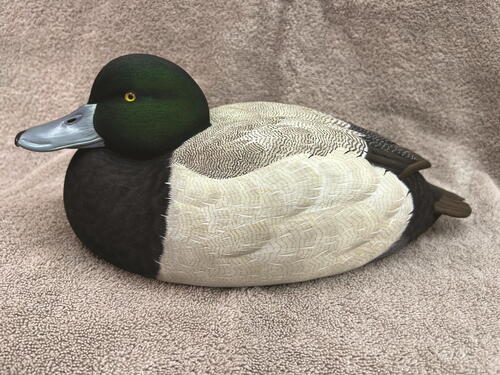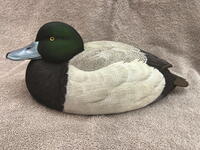Bluebill Basics, Part Two
Finishing a classic scaup to create a real keeper

It’s now time to paint my greater scaup. Just to reiterate, when I finished carving, I sealed the bird and then let it dry thoroughly overnight. I am now ready to paint. When I paint my birds, I use three mediums: acrylic paints, lacquer paints, and oil paints. The first two are used to apply a base coat to the piece; I then do the final finish application with oil paints. The use of lacquer paints is a personal innovation that I stumbled upon years ago; it has been a huge time saver for doing the base coat, and I find it a better option than gesso for my painting style. It comes out very thin and dries almost instantly and usually requires only one application.
The tools that I use to apply these mediums are as follows: an airbrush to apply the acrylic base coat, a stiff-bristled brush to apply the lacquer paint, and an assortment of high-quality kolinsky and sable brushes for the oil paints. Due to the nature of the color patterns of the greater scaup I used a fairly limited palette of colors to complete the project.



